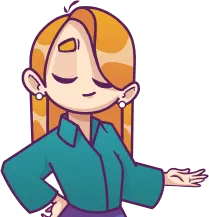
Plate Tectonics
Assessment
•

undefined undefined
•
Science
•
6th Grade
•
48 plays
•
Medium
Improve your activity
Higher order questions
Match
•
Reorder
•
Categorization
.svg)
actions
Add similar questions
Add answer explanations
Translate quiz
Tag questions with standards
More options
28 questions
Show answers
1.
Multiple Choice

Scientists think the continents once formed a large, single landmass that broke apart, and the continents slowly drifted to their present locations. What is the name given to this claim?
continental slope
continental shelf
continental drift
continental rise
2.
Multiple Choice
Florida is not close the edge of a tectonic plate. Therefore, which one of the following features does not exist in or beneath Florida?
tectonic plate boundary
tectonic plate
mantle
crust
3.
Multiple Choice
The Red Sea formed as the African Plate moved apart from the Arabian Plate. Which type of boundary was involved in the formation of the Red Sea?
convergent boundary
stationary boundary
divergent boundary
transform boundary
4.
Multiple Choice
The Rocky Mountains formed when the Pacific plate collided with the North American plate. Which of the following terms describes this process?
convergent boundary
transform boundary
divergent boundary
ridge push
5.
Multiple Choice
The asthenosphere is the part of the mantle on which the tectonic plates move. Which of these statements best describes a characteristic of the asthenosphere that allows the tectonic plates to move?
It is porous.
It is permeable.
It is rigid.
It is soft.
6.
Multiple Choice
A plate boundary is a place where two tectonic plates meet. There are several types of tectonic plate boundaries. Which statement below shows the correct definition of a tectonic plate boundary?
At a divergent boundary, one plate sinks under another plate.
At a convergent boundary, plates slide past each other.
At a transform boundary, plates move apart.
At a divergent boundary, plates separate.

Explore this activity with a free account
Find a similar activity
Create activity tailored to your needs using
.svg)

Plate Tectonics
•
11th - 12th Grade

Plate Tectonics
•
9th - 12th Grade

Plate Tectonics
•
6th Grade

Plate Boundaries
•
6th - 8th Grade

Plate Boundaries
•
6th - 7th Grade

Tectonic Plates
•
6th - 8th Grade

Earthquakes
•
5th Grade

Plate Tectonics, Earthquakes, Volcanoes
•
9th - 12th Grade












